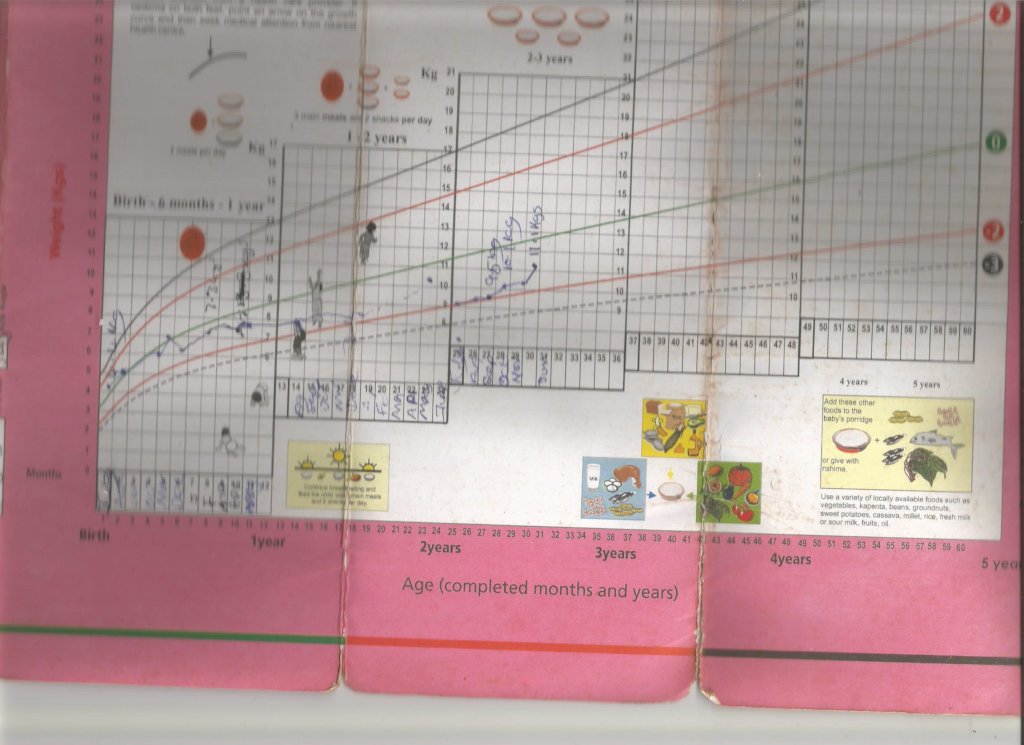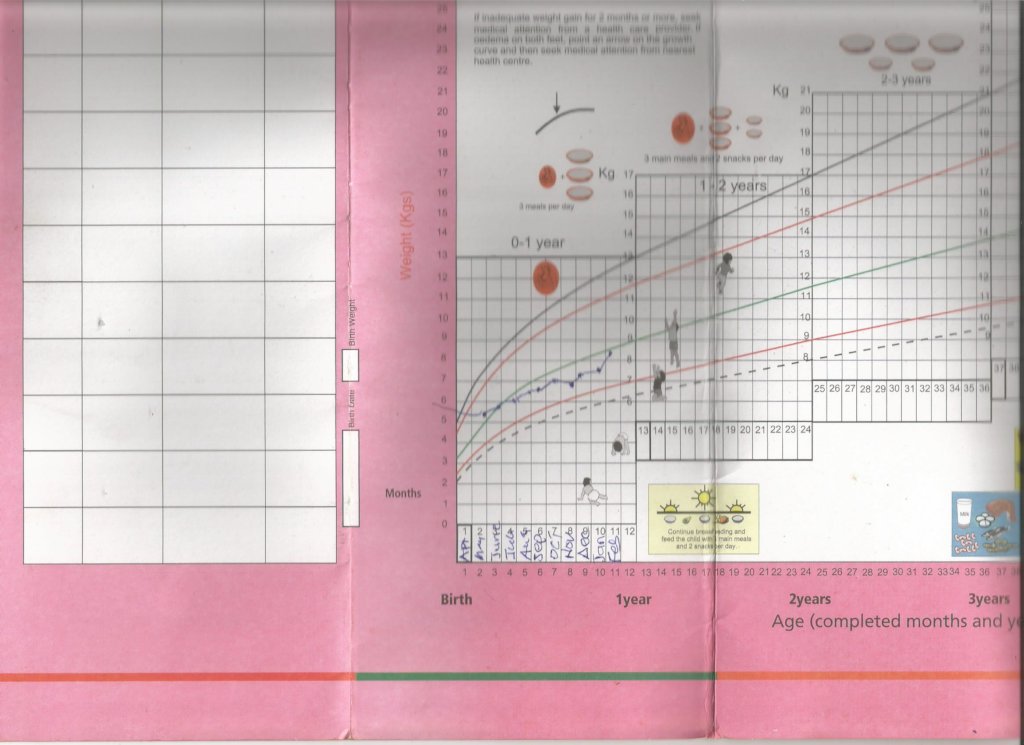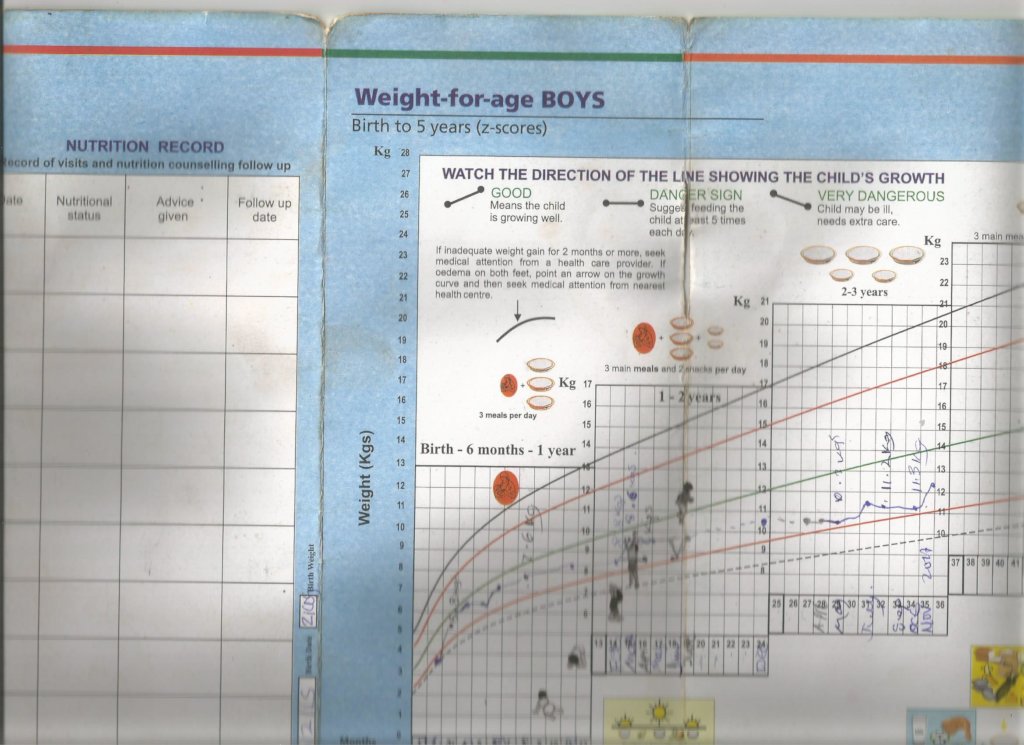By Elke Kroeger-Radcliffe | Voluntary Director
Statistics
Average age of 229 children is 30.6 months
Average age of 109 grandmothers is 53.2 years
Average age of 229 mothers is 27.1 years
Average age of 120 fathers is 29.7 years
Years of schooling Grandmothers 2.7 years; Mothers 6.6 years; Fathers 5.1 years
Status Married 151, divorced 20, single 41, status unknown 17
Child’s place in family: First-born 64, in-between 38, last-born 121, position in family not recorded 6
Average age difference between siblings: just under 2 years (nationwide 3)
Children per family: 3.3
Eating together: 5.9 people
Sources of Income: farming 118, business 58, piece work 62, charcoal burning 4
Produce per family: maize 100 %, soya 46 %, cassava 11%, pigeons 10 % (about half of the grandmothers had been members of a Tiko women’s club)
Owners of cellphones: 100 out of 223, talktime per week 7.5 kwacha or 0.75 dollar or 75 cents
Children seen: 229 children were seen the first time, 146 a second time and 156 a third time. The second and third interviews questions were asked about food for the child with malnutrition.
Results from the third interview with 156 families:
For breakfast, lunch and dinner Porridge 134, Nsima 327, vegetable 194, protein 72, beans & groundnuts 103
Between meals Snacks including sweet potato or biscuits 25, breastfeeding 35. Those indicating nothing either verbally or nonverbally 65
Nutrition in detail:
For the families with 156 children who were on the road to malnutrition, there was no trace of a balanced diet: 461 x maize,( i.e. 3 times a day starch with just a little protein). Zambians prefer white maize meal which has very little protein. Tiko is introducing ‘brown’ maize, which is even cheaper to grind, mixed with 50 % cassavaflour. People are stuck on maize, so half cassava is a real important step forward. Cassava is cheap to grow, is drought resistant avoids he debts that go with hybrid maize seed and artificial fertilizer buying, even if subsidized.
For the 156 children there were 72 servings with protein, i.e. less than half of the family got any protein during the day, kapenta (dried fish) and eggs , some soya products (commercial) and beef. Note that the best servings go to the man of the family, if there is one, especially the fish (5) and chicken (2). Most received one and a quarter portions of vegetable, mainly rape (90), dried pumpkin leaves (65), okra (18), cabbage (8) and cowpea leaves (7). Two thirds got some legume once a day and only 35 families get one ‘in-between’snack, namely sweet potato (12), rice (6), banana (5) and one orange.
From observations and reports it is clear that meals are prepared for the entire family and only the father is favoured. It is unlikely that the mother took special care of the child with malnutrition. The malnourished child is not given special care and in fact the interviewers found the ONENEPA was being shared by all the children. This makes sense to the Director of Tiko. When years ago Tiko was distributing food to community schools, there were always some children described as especially in need. These were given extra bags of maize by World Food Programme, but most villages did not agree and divided that maize between all of the households.
Compared to a Mediterranean diet, out of 20 portions a day with fruit, vegetable, grain, and protein, these families get 18 portions out of 20 from maize. Considering that maize is being planted by almost all rural people in Zambia and is a disappointment every year for subsistence farmers, then there is not only the wrong food being produced , but also not enough of the wrong food!
Moreover, half of the children in one group and a third in the other had had diarrhea in the week before the interview. These findings are shocking and well explain why there is so much malnutrition in Katete.
Report from the fourth and last visit
With the rains having started early and then stopped, the first half of the harvest was lost. When the rains restarted, the farmers went to the fields with double zeal and there was no way we could hope to see the mothers and children together at all. So, only the under-five cards were collected.
Results: out of 164 children we had seen on the third visit, 30 had not been to see the clinic for being weighed in 2018, which left 134. Out of these, six or 4.5% went further down towards malnutrition, 28 ie 21% kept their direction from before, 10 or 6 % improved in the beginning and went down at the end or the other way round, but did improve overall and 90 or 69% did clearly change direction away from malnutrition.
Conclusion
Stop malnutrition in 200 underfives in Zambia was our goal. We saw 239 children at the first visit, and out of them 156 on the third visit. 100 of these had changed towards a better weight after 3 weeks with ONENEPA and 3 weeks without. That is half.
Whether these children will continue towards an average weight, in other words, whether we ‘stopped’ malnutrition in these 100 children is another question. Going by anecdotal evidence, namely the call from the mothers to please come back, we think we did achieve some change in awareness of the young child’s needs, but from the information we collected on the nutrition people get and the deep belief in sharing alike, not according to need, a more decisive change of mindset will have to be effected.
Just how unaware some people in the villages are as to the needs for healthy food you will find reported in Tiko’s newsletter from end of March. A new group we visited insisted they needed to start income-generating activities like chicken and did not take into account that not only did they themselves not have enough food, but that the pigs next door, the result of their last ‘income-generating activity’ had not had food for 5 days and no water for 3.
Not all of the money from the crowdfunding has been spent. We will go back to the villages with food demonstrations for snacks. When a mother is told that her toddler needs five meals a day, she will panick, because for her that means the need for five times cooking, which of course is impossible.
Links:
Project reports on GlobalGiving are posted directly to globalgiving.org by Project Leaders as they are completed, generally every 3-4 months. To protect the integrity of these documents, GlobalGiving does not alter them; therefore you may find some language or formatting issues.
If you donate to this project or have donated to this project, you can receive an email when this project posts a report. You can also subscribe for reports without donating.


